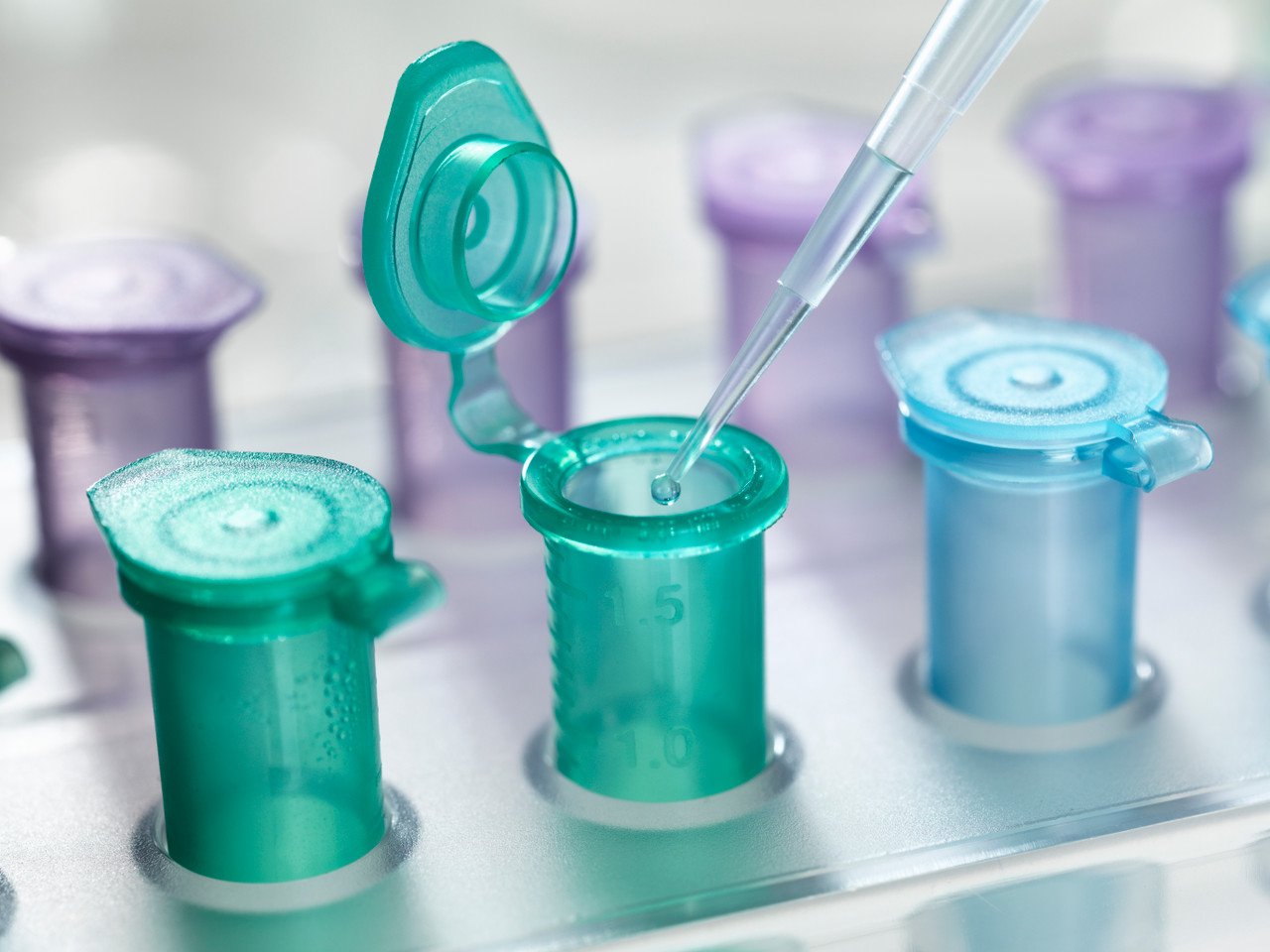Background and Introduction to Small Molecule Adsorption
In molecular biology, many of the molecules of interest exist only in picogram amounts within the cell. Collecting enough protein and DNA for tests can be a challenge.
The result is that more often than not, samples from cell cultures are very dilute and may not contain enough of the desired molecule for analysis.
One reason for this is that nucleic acids and proteins are capable of adsorbing to polypropylene, which is the main material that small volume tubes are made from.
Research has shown that the amount of sample recovered varies widely because of nonspecific binding to some tube surfaces.
Recovery can vary from 90% to as low as only 10% in some tube types.
While polypropylene is still the material of choice for molecular biology, some protocols require low-binding polypropylene for higher concentrations of nucleic acid and protein.
Protein and DNA Loss when Choosing the Wrong Tubes
Proteins and nucleic acids have a property that allows them to bind to each other and to other materials through isoelectric interactions.
These are interactions that develop between electrically neutral regions of molecules. The interactions are weak, but they are capable of causing loss in dilute samples.
An Example of Tube Selection Gone Awry with Progranulin
In this study on the glycoprotein known as Progranulin, a routine incubation in regular polypropylene tubes resulted in 25-35% protein loss.
This study also showed that adsorption happens quickly, with most of it occurring within ten minutes of the sample being added to the tubes.
The progranulin study confirms that lower concentrations of adsorbed more. Adsorption decreased as tubes were saturated with protein.
The takeaway here is that you can lose a lot of your target protein if it is not very concentrated. Low binding plastics are a big help!
Research Connections with Low-Retention Tubes
This study looked at protein isoforms of A? as biomarkers for Alzheimer’s Disease.
It was found that protein levels in cerebrospinal fluid samples increased when collection and storage tubes were of low-binding type.
Looking at the more abundant isoforms and changing the target to isoform ratios eliminated large fluctuations in levels.
Importantly though, this study demonstrated that even molecules in low abundance could be used as biomarkers with low-retention tubes.
The takeaway? You’ll jump through fewer hoops to get good results with low binding plastics.
When to Use Low-Retention Tubes?
- When working at room temperature or above
- When working with samples from cell culture
- When working with very small volume samples
- When trying to isolate something found in low abundance
Are you switching to a protocol that targets a protein or mRNA molecule found in low abundance?
Now is the time to consider switching to low-binding plastics for your molecular biology assays.
Tips for Improving Sample Recovery and Assay Results
- Use low-retention pipette tips for all steps
- Use low-retention tubes for collection, processing, and storage
- Use low-retention plates for any process that does involve capture of molecules for results
- Be mindful of freeze-thaws and aliquot samples
- Molecules tend to absorb less over ice than at room temperature and above
- Washes can be used to improve recovery, but you cannot concentrate samples again without the right tubes
Stellar Scientific’s SeeMore Low-Retention Tubes
Visit Stellar Scientific’s online catalog of SeeMore microcentrifuge tubes for several low-retention tube options.
We offer 2.0 mL, 1.7 mL, and 0.65 mL options in crystal clear polypropylene that can handle speeds of up to 24,000 x g.
All of our tubes are sterile packed and RNASE/DNASE free for cell culture and other delicate molecular biology applications.
You should also take a look through our selection of Teepa low-retention pipette tips while you’re at it!
If you need any help, head over to our contact us page for our hours and phone number, and drop us a line.
We’re here to assist with any questions about products or suggestions, just let us know.
Footnotes:
____________________
- Gururaj, S., Sampognaro, P. J., Argouarch, A. R., & Kao, A. W. (2020). Progranulin Adsorbs to Polypropylene Tubes and Disrupts Functional Assays: Implications for Research, Biomarker Studies, and Therapeutics. Frontiers in neuroscience, 14, 602235. https://doi.org/10.3389/fnins.2020.602235
- Vanderstichele, H. M., Janelidze, S., Demeyer, L., Coart, E., Stoops, E., Herbst, V., Mauroo, K., Brix, B., & Hansson, O. (2016). Optimized Standard Operating Procedures for the Analysis of Cerebrospinal Fluid Aβ42 and the Ratios of Aβ Isoforms Using Low Protein Binding Tubes. Journal of Alzheimer's disease : JAD, 53(3), 1121–1132. https://doi.org/10.3389/fnins.2020.602235
- Zhang, Z., & Gao, Y. (2023). Evaluation of the Binding Preference of Microtubes for Nanoproteomics Sample Preparation. Journal of proteome research, 22(1), 279–284. https://doi.org/10.3389/fnins.2020.602235


